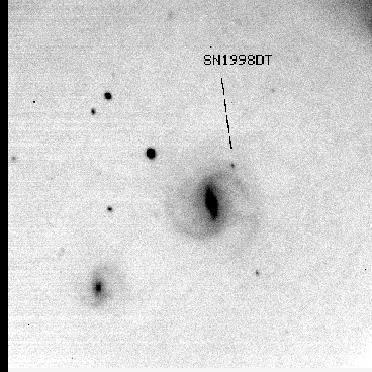

 |
 |
As massive red supergiants age, they produce "onion layers" of heavier and heavier elements in their interiors. However, stars will not fuse elements heavier than iron. Fusing iron doesn't release energy. It uses up energy. Thus a core of iron builds up in the centers of massive supergiants.
Eventually, the iron core reaches something called the Chandrasekhar Mass , which is about 1.4 times the mass of the Sun. When something is this massive, not even electron degeneracy pressure can hold it up.
The core collapses. Two important things happen:
Even though neutrinos don't interact easily with matter, at densities as high as they are here, they exert a tremendous outward pressure.
Supernovae are really bright -- about 10 billion times as luminous as the Sun. Supernovae rival entire galaxies in brightness for weeks. They tend to fade over months or years.
During the supernova, a tremendous amount of energy is released. Some of that energy is used to fuse elements even heavier than iron! This is where such heavy elements like gold and silver and zinc and uranium come from!
The material that gets ejected into space as a result of the supernova becomes part of the interstellar medium. New stars and planets form from this interstellar medium. Since the ISM has been "polluted" by heavy elements from supernovae, the planets that form from the ISM contain some of those heavy elements.
The collapsed core is also left behind by a type II supernova explosion.
If the mass of the core is less than 2 or 3 solar masses, it becomes a
neutron star. If more than 2 or 3 solar
masses remains, not even neutron degeneracy pressure can hold the
object up, and it collapses into a black hole.
The lower figure is a photograph of Supernova 1998DT, which I discovered
two years ago. The photo was taken by the Katzman Automatic Imaging
Telescope (KAIT) at Lick Observatory.
Back to the Stellar Life Cycle Flow Chart